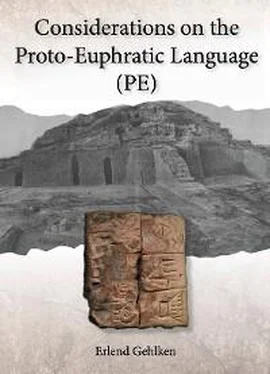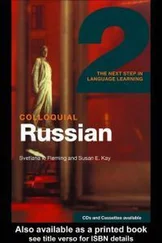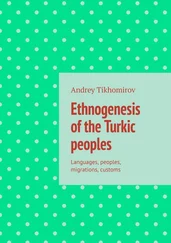3. Pronunciation
| c |
(Ayin); a voiced pharyngeal fricative (Arabic) |
| ç |
ch in ch urch (in Turkish words) |
| ǧ |
j in j ournal |
| ĝ |
ng in ri ng |
| ḥ |
an unvoiced pharyngeal fricative [a rasping H-sound] (Arabic) |
| ḫ |
ch in Scottish Lo ch Ness (“kh”) |
| ṣ |
emphatic s (Arabic) |
| š |
English “sh” |
4. Transcriptions
Since the PE pronunciation of cuneiform signs is unknown, PE readings are given by their “sign names” (after Borger, ABZ); approximate pronunciation indications are enclosed in “/ /” (e.g., NUN.ME (=) /abgal/). Sumerian words are written in normal Roman type (but not spaced, as was customary in the past), Babylonian words in italics.
In some cases, full stops are placed between logograms to indicate that the logograms form a separate unit compared to another logogram (example: GÁN EN, GÁN BU.KI: EN and BU.KI are [functionally] equivalent); in some cases hyphens are used to identify units as such (EN-É-TI). These designations are inevitably subject to a certain arbitrariness.
Sign variants (EN avs. EN b) will only be marked if they are necessary.
The distinction between g and ĝ has been dispensed with, apart from a few exceptions (especially in the index).
Generally, a “conventional” transcription is used in order to also offer interested lay people the possibility of verification (Inanna instead of Innana, etc.; only professionals will know that, in Civil’s opinion, ḫirin xshould be read instead of ŠAGAN [Civil 2013, 58]). This means that by and large the transcription offered in ATU 2 has been adopted 23.
The line/‘case’ designations used by Englund (passim; → chapter II, note 1) such as O0102 etc. (see m1/p10) have mostly been simplified, in the given example to obv. i2. Line numbers are only given if the search would take longer in the case of larger texts (exception: entries in → VII). Englund’s convention of marking the first preserved line of a text with “1” (instead of “1'” if lines are broken before it) has been adopted.
Minor breaks are only marked in the transcription, not in the translation.
5. General Information
In order not to overload the study, OBO 160/1 is quoted if possible (i.e. usually Englund, even if Englund refers to other authors there).
The attached illustrations are for guidance only; they have been drawn “free-hand” from copies or photographs; in case of doubt the reader should consult the original sources.
Since this study is based on the assumption that PE was not only a spoken but also a written language, “assumed” or “postulated” is not added at every occurrence of the word/(abbreviation) “PE”. Sometimes “PE” and “from the Uruk period” are used synonymously; the entire Uruk period is never meant, but always only the (time of the) writing phases Uruk IV and III.
The title of this chapter is borrowed from Englund, who wrote a sub-chapter (4.4) called “The Sumerian Question” in OBO 160/1, 73–81. In principle, it is about one and the same thing, only PE instead of Sumerian comes to the fore here. All questions that are necessary or could be useful in order to “pin down” those who created cuneiform (‘proto-cuneiform’) are addressed by Englund. Among other things, he deals with numerical systems, the sequence of signs in ‘cases’ 1, Sumerian readings in general, the “inadequacy of cuneiform in representing the phonetic structure of Sumerian words”, possible multivalent signs, phonetic elements, the conceivable adoption of PE readings into Sumerian, the “verbs” BA and GI as well as the Uruk III period personal names, which usually cannot be interpreted as Sumerian. Reference is always made to Englund where relevant.
1. General Information
Most of the texts (or expressions) of the Uruk period do not make sense when translated as Sumerian texts (examples: → III–1–h and VI–1; texts: a7/21914, m4/79). Yet almost all scholars adhere to the opinion that they are written in the Sumerian language. In addition to the passage quoted in the preface, explicit reference shall be made to § 6 in the RlA, article “Sumer, Sumerisch”.
When working with a pictographic writing system (the first known script besides the Egyptian hieroglyphic script) where only the essentials are recorded in a kind of telegram style, it is not easy to distinguish two languages from each other. As late as in the ED I–II period, hardly any grammatical elements were written (cf. among others Burrows 1935, 22f. and Lecompte 2013, 9), which – not surprisingly – shows that for a Sumerian the texts were understandable even without (written) grammatical elements. There is a tendency to classify the records from Uruk as “readable in any language” if the meaning of the individual signs is known; the (document) form is considered “the grammar” (for example, cf. Nissen et al . 159; Englund 1998, 79). This is not entirely correct, as the order of the signs (in the Uruk period almost always corresponding to the spoken language [→ III–3–g], in the following ED I–II period “sloppy” [Burrows 1935, 27]) definitely allows conclusions to be drawn about the language. In Japanese, for example, the standard word sequence is subject – object – predicate, whereas in Chinese it is subject – predicate – object. It is well known that the same characters (with different pronunciation) are used for writing in both languages; in Japanese syllable characters are additionally used for writing grammatical elements. A Japanese person can roughly understand a Chinese text; it should also be the case the other way round.
In the Uruk period, no bilingual texts are to be expected, since there were presumably only PE scribes (and possibly Sumerian pupils) and no literature existed yet (an exception could be the lexical list a3/TRIBUTE, → III–1–h). Glosses might exist; unfortunately, it has not been possible to identify one yet. It seems rather likely that glosses do not exist. Just think of the Middle Ages in Europe – the monks wrote Latin; the Old High German gloss “diutisce gellit” (“in German: ‘Schale’ [bowl]”), which explains galeola , seems to be a “fortunate” exception. Bilingual dictionaries are not known (→ Index of Terms, Words–3b [PE]).
Three examples in which one and the same fact is represented in the language of the Uruk period texts by different sign combinations are discussed in → III–note 4 (EN.KID/É vs. EN.NUN), V–2 (HAL.GAR vs. NAGAR) and V–3 (UB.ŠÀ vs. ŠÀ.URI).
In the ED I–II period there seem to have been no glosses (and certainly no Sumerian–PE bilingual texts); the document form of the texts is different; they were almost certainly only written by Sumerians. The aforementioned kudurrus pose certain difficulties (→ I–3; Gelb et. al. 1989; 1991).
Therefore PE must be made accessible more or less “from out of itself” (compare NABU 2018/93 and 2019/58).
2. Criteria that could argue for a change from PE to Sumerian
The following selection is to be understood as an anticipatory look ahead with cross-references. With a few exceptions (in my view), the criteria set out below are not necessarily conclusive as one could always argue that there has been a development over time (though the temporal gap between the PE and the ED I–II texts is, as already mentioned, not that significant).
–Calendar: the leap year probably existed already in the Uruk period, names of months did not exist yet (→ IV–7 and ~ 9).
Читать дальше












